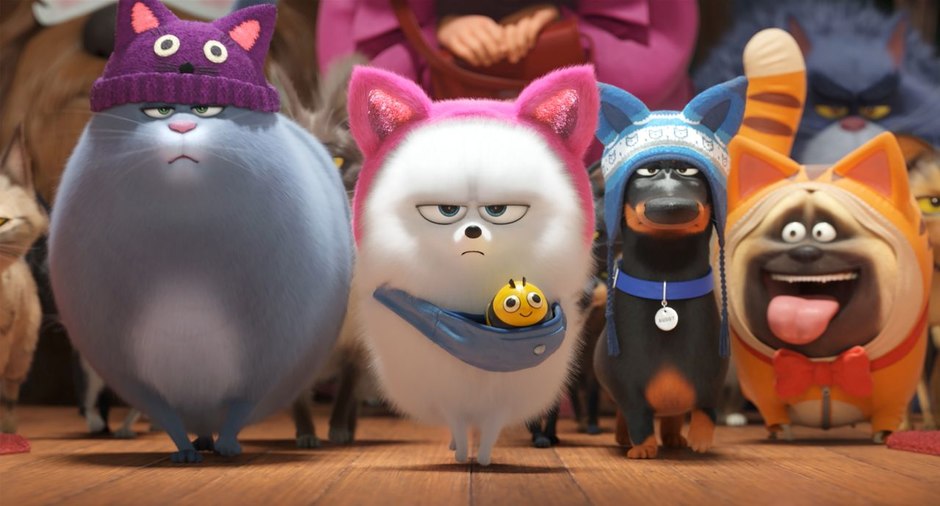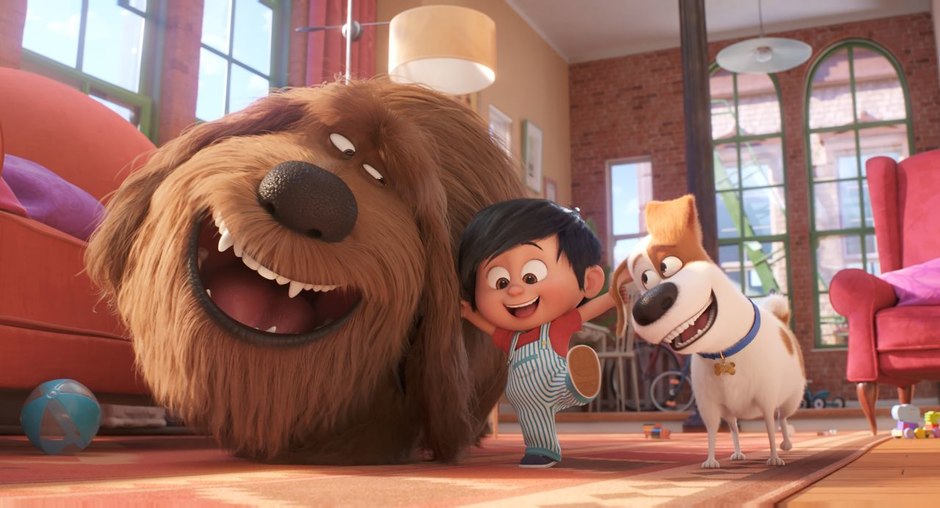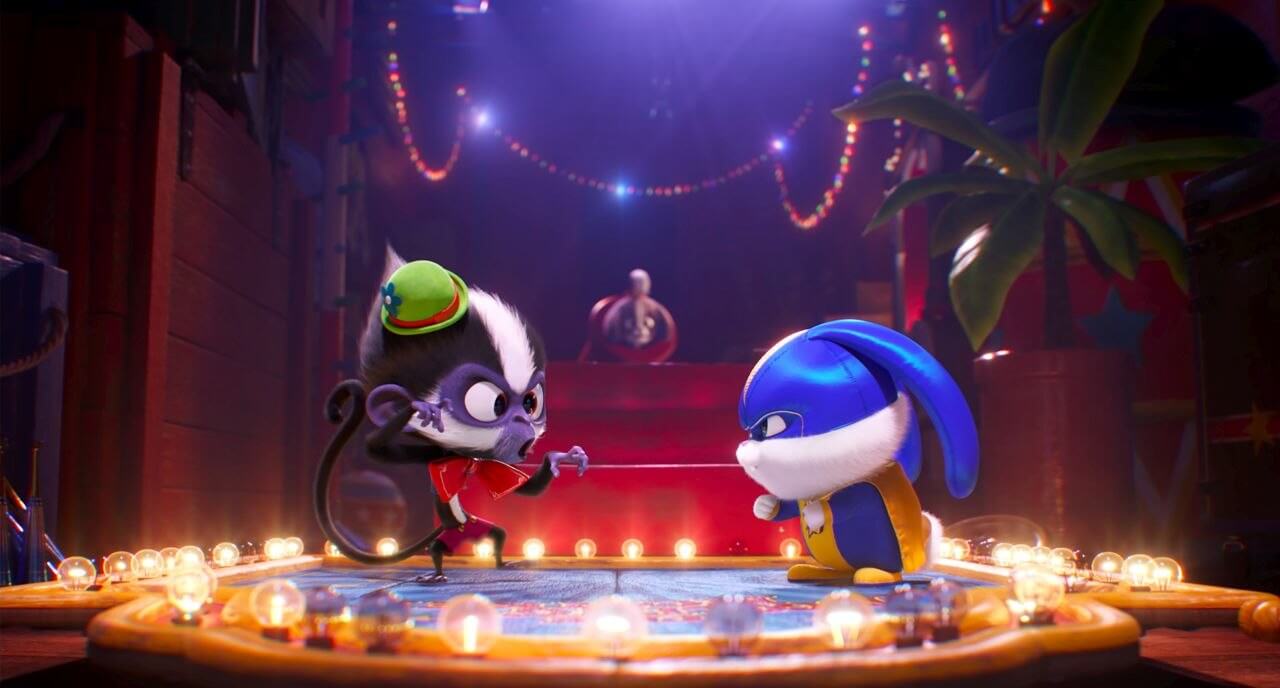Dogs and Their Kids: Chris Renaud Talks ‘The Secret Life of Pets 2’
Illumination Entertainment’s veteran director is back with a touching story about an anxious, ‘helicopter’ dog that finally learns to relax and let go.

In the hilarious and wildly successful The Secret Life of Pets (2016), audiences laughed at Illumination Entertainment’s animated exploration of a simple, but perplexing question: what are our pets really doing when we’re not at home? Three years later, with the release of the sequel, The Secret Life of Pets 2, audiences are once again laughing at the hilarious, cuddly ensemble of New York apartment-dwelling critters that, when left to their own devices, somehow manage to create chaos out of calm, without their owners ever catching on.
A much more emotionally satisfying, less frenetic film than its predecessor, The Secret Life of Pets 2 focuses on the unconditional love, and subsequent over-protective relationship, that develops between our hero, Max, a nervous terrier, and his kid, Liam, a dynamic that consumes our canine’s every waking thought. His furry “helicopter parent” role reversal anchors the film, setting up a satisfying and heartfelt resolution for both dog and kid that gives the film it’s considerable charm.
Helmed by returning director Chris Renaud, along with co-director Jonathan del Val, the film deftly hits important emotional beats… but at the same time, it’s funny. Extremely funny. A cast that includes Patton Oswald (taking over for Louis C.K.), returning stars Kevin Hart, Jenny Slate and Bobby Moynihan, as well as newcomers Tiffany Haddish, Nick Kroll and a resolute Harrison Ford, deliver solid, comedic performances all around. And while Hart’s standup career has nothing to fear from Ford, any film that casts Hans Solo as a dog gets the nod from me.
I recently spoke to the director about his return to the franchise for its second go round, including his thoughts on story development, directing challenges and casting Ford as the tough but humble farm dog, Rooster.
Dan Sarto: Pets 2 feels less frenetic than the first film, not as forced. It’s like you setup scenes, sat back and just let the characters do their thing.
Chris Renaud: Yeah, what we tried to do in this sequel, as you’re saying, was let the characters breathe a bit. With Pets, as can be typical with a first movie, you’re introducing the concepts of the world as well as all the characters. On Pets 2, with all that work was behind us, we could put the characters in situations and have fun with how they reacted. We could really just focus on character stories.
DS: You say let them breathe… they’re great characters, and you stayed true to them. You deftly mix new with familiar territory, which is the mark of good storytelling in a sequel.
CR: You nailed it. What you just said is exactly what I say when we’re developing a sequel, what you’re trying for. You have to maintain the flavor and the appeal of what the audience liked about the first one while going to completely new territory with new characters, new environments and new scenes. That’s what we really set out to do on this film.

DS: How did the story evolve? You start in the same apartments where you ended the previous film, but with the exception of some existing characters, for the most part, everything is new.
CR: Very early on, Brian Lynch [the writer], Chris Meledandri [the producer] and I started with the idea of dynamic between pets and kids. When you talk about social media, there’s a ton of stuff with kids and pets out there… clearly from the end credits. So, there’s a wealth of fun material.
So, we started playing with the idea that sometimes the relationship between pets and kids can be very fraught, because a kid doesn’t know their own strength, they’re teasing the dog or the cat, and then the animal’s upset.
I remember with my dog – I had an Irish Setter named Shammy when I was a kid – when toddlers would come around, she would get almost this look of resignation. And the kids would pet her kind of roughly. They didn’t mean to be mean or anything, but it’s just they didn’t know what they were doing. So, you always have to be very careful with kids and pets.
But I was always amazed that she would kind of submit to their over-loving, versus snap at them or be angry. That was part of what we were thinking about, this kind of unique relationship between humans and pets, especially kids.
So Max, with kids, starts out like, “I don’t want anything to do with that.” And then of course, his owner Katie ends up having a baby and his attitude completely changes. A little bit of Max’s story clearly can be compared to a parent’s story in a lot of ways. So, we felt a great direction to go in would be seeing the relationship between a kid and their pet blossom and develop into real love. We started with that idea and where we could take it — that felt like something we hadn’t really tapped into in the first film, that we could make something out of with the second.

DS: There’s big cast changes with major new additions. Of course, Patton Oswald easily took over for Louis C.K. You’ve got Tiffany Haddish as a suffer-no-fools Daisy and Harrison Ford as this great stoic character, Rooster. How do you decide on adding new folks to the ensemble?
CR: Well, with Max, obviously we wanted to find somebody who maintained the spirit, the feeling, of the character from the first film. Kind of a neurotic New York terrier. Patton, in his own distinct way, was able to really hit that for us. He has his own style, a nervous chuckle. He’s got these certain affectations that make his version of Max still very much in keeping with what we established in the first film.
With Daisy, Tiffany Haddish’s character, she comes to recruit Snowball to help her save the day and rescue an animal in distress. It just felt like a fun idea to have somebody play that character. She comes in, she’s very earnest in recruiting Snowball because Snowball is deluded and thinks he’s a superhero now. But very quickly, her attitude kicks in and she’s like, “Okay, this guy’s a fool and sort of out of his depth.” It was a fun contrast to have this character with attitude match up with Snowball’s luster and bravado.
Then, with Rooster, Harrison Ford’s character, we get into the country mouse, city mouse, Aesop’s fable dynamic. But, we also use that to reinforce one of our main themes, which is a little bit like it’s a dangerous world but we have to live in it.
Harrison’s voice has such authority, such grit. There’s a lot of weight to it, and he was a perfect contrast to Patton’s Max. It was a great way to pass on some wisdom to Max’s character. He has his own little arc, where he’s initially very dismissive of Max in a great kind of Harrison Ford way, but then comes to a bit of an understanding.

DS: The thing that’s so great about Ford’s casting is that he has the right amount of steely stoicism, but he’s not an action hero. It would’ve been a bit too much to have a Stallone-type tough guy in the role. Ford feels much more thoughtful.
CR: Well, with some of our favorite Harrison Ford characters – and I’m going to name the big ones, which are Han Solo and Indiana Jones – the great thing is they have a sense of humor in addition to being men of action. A bit of sarcasm. That comes through in Harrison’s performance. That element kind of makes it fun and not so stiff.
DS: When the first film came out, you mentioned that you involved your team a lot in the animation development process. You’d tell them, “Let’s come up with some funny ways to animate animals.” With regards to gags, you really got them involved in helping to develop some of the film’s more humorous elements. What did you say to them on this film?
CR: We did the same for this film. The chief place you’ll see that is the opening montage with Liam and Max and Duke. We had storyboarded the sequence, but a lot of that was discovered with the animation team that co-director Jonathan del Val helped lead. We developed them first as tests, much like we’d done in the first film. Then, a lot of those tests became part of the movie. So, we’re always looking for participation. That’s a very specific example of how to get the best out of your team. It’s very similar to what we did on the first movie.

DS: You guys have these great franchises with multiple films now. What’s the biggest hurdle making a sequel?
CR: It’s always story. Story and character. Whether you’re introducing new characters or trying to find a new dimension for an existing character, the hardest part is landing on what’s going to be satisfying and give you the right mix of comedy and emotion. Fingers crossed, you hope for that. If you can get the audience to feel, and to laugh, then you’re on the path to getting something right. That’s always the tough part… trying to figure out what kind of story would feel is satisfying and delivers those emotional and comedic elements.
DS: Every time we talk, I ask you the same question. It never fails to amaze me how big these films are, how many moving parts are at play. The process is so sophisticated. And yet you somehow manage, after many years, to produce these great films. You start Day One and then many years later, the work is suddenly done and you deliver an animated comedy gem. That just seems to defy all laws of nature and logic. So I ask, as always… was this movie more difficult than your last one? You’ve directed several now. Was this any easier for you than any of the previous films you made?
CR: You know, weirdly, Pets 2 sort of inhabits a special place in my mind. I hesitate to use the word “easier” because that’s dangerous to say. As with all our animated movies, figuring out the story is very iterative. You’re just re-working and re-working and re-working. But when we landed on how to reinforce our theme – which was this is a dangerous world, but we have to live in it – through the farm and Rooster, the movie kind of dropped into place in a very satisfying way. The other thing is, the ending of the film, which I don’t want to give away, but the very end scene was something I had been visualizing for a while and was thinking, “Okay, we can get there.” When that all started to come together, it was really kind of a joyful process, I have to say.
Of course, there are always bumps and “Oops, that didn’t work the way we thought… we have to re-work it.” But this film was really special for how well it flowed, actually. Bumps and all. Everything seemed to work together early. We weren’t fighting disparate elements or ideas that didn’t belong. It all felt like it was rolling in the same direction. But, maybe that’s just my rose-tinted glasses memory of things. For me, it was especially fulfilling and a lot of fun.

DS: I love the way you guys design your films. The look development, from the color schemes to the environments, the designs of every little thing in every room, every asset. Your films have this look I refer to as sleek and pointy, which to me feels unique. How did you approach the design process on this film?
CR: Well, like I’ve said before, a lot of that credit goes to Eric Guillon, who was the chief designer on the first Pets. If you notice, there are a lot of pointy things. If you look at the Despicable Me world, it’s very graphic. We always compared his work to Raold Dahl. When Eric and I were first talking on Pets, we discussed things like New Yorker cartoons, even The Far Side by Gary Larson. Very simple, very sleek, very very funny graphic design solutions.
Working with Colin Simpson, who did Rooster, because Eric wasn’t actively working on this film, we tried to make sure we maintained that unique design sensibility that is just so graphic and appealing. It starts with a kind of cartoon-y idea, then trying to make that in three dimensions.
DS: Aside from story, which is always a big struggle, what were the biggest challenges on the film? When you were trying to get some 200 artists to all row in the same direction, what were some of the big obstacles you had to get past to get this film made?
CR: Gosh… not story… You know, one of the big challenges, that’s sort of story, but not really, was getting the three storylines to weave together as well as they could. It’s not story per se, it’s how to get the storylines living nicely together, creating film that didn’t feel like it was jerking you from one scene to the next.
That was a process of changing sequence order, maybe eliminating a scene. I suppose you’d consider that editorial. Trying to find the best rhythm. Also, working with the composer. Okay, musically, how can we stitch this all together? Because with the music, there’s a haunted house feeling, there’s a circus scene, there’s a superhero theme. There’s a lot of different ideas that had to come together musically, but again, not leave the movie or the score feeling disjointed.

Getting everything working together as well as it could was a constant challenge we kept having to revisit. At the end of the day, no matter what, it was three storylines you’re weaving together. It wasn’t like the first film where you’re basically following Max and Duke, with little cut-aways here and there with Snowball and Gidget that didn’t feel like separate storylines.
But when all is said and done, the challenges were not so big that they kept us from telling a great story. I hope the audience will leave the theater glad that they had another chance to spend some time with these characters. We had a great time working on the film and it’s my hope that joy comes across in this movie.”
Reporter: Dan Sarto
Source:www.awn.com

熱門頭條新聞
- UK VFX tax credit uplift will start on Jan 1st
- 40 Years Later And “The Terminator’s” Warning About Technology Feels More Real Today Than Ever Before
- The World Animation Summit Returns This November
- Eggy Party’s New Creator Incentive Program Launches With Paid Rewards For Player-Made Content
- Bradford 2025 UK City of Culture
- Ventana Sur2024
- NG25 Spring
- Maintain Altitude’s Revolutionary Music Game Secures $500k in Pre-Seed Funding Led by Hiro Capital
